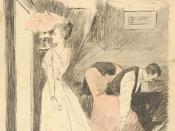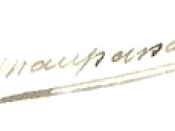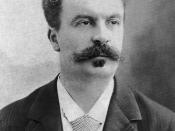During the course of Guy de Maupassant's short story "The Necklace," the main character, Matilda Loisel, makes a number of ironic discoveries. In addition, there are other discoveries that the reader makes but Matilda does not. The discovery that forms the story's climax concerns the true nature of the necklace she has borrowed from her friend Mrs. Forestier. However, this is perhaps not the most important lesson of this story.
As the story opens, Matilda, a young lower middle-class wife who desires to join in upper class, is invited to a high-society affair given by her husband's employer. Hoping to show off to other guests, she borrows a beautiful diamond necklace from her friend, Madame Forestier. Unfortunately, during that evening, she had lost her necklace. Rather than telling her friend, she and her husband had scraped together every bit of money they can to acquire the diamond necklace. After long years of hard work, Matilda now looks frail, haggard, and common.
When she meets Mrs. Forestier in the street, her friend does not even recognize her. The story ends with Mrs. Forestier's revealing that the diamond necklace was fake. Matilda and her husband?s long years of work were in vain.
I think the necklace is not the most important part of the story. In the beginning, Matilda felt disgruntled with her husband and his lifestyle because she was vain; she felt she had deserved to be rich and live fulfilling. She felt she could not attend the Minister's party without a fancy dress with ornaments; she should never have sought to borrow a necklace so luxurious she could not meet the expense to replace it. She felt she could not tell Mrs. Forestier about the loss of the necklace, even after it had been replaced, because she was too...


